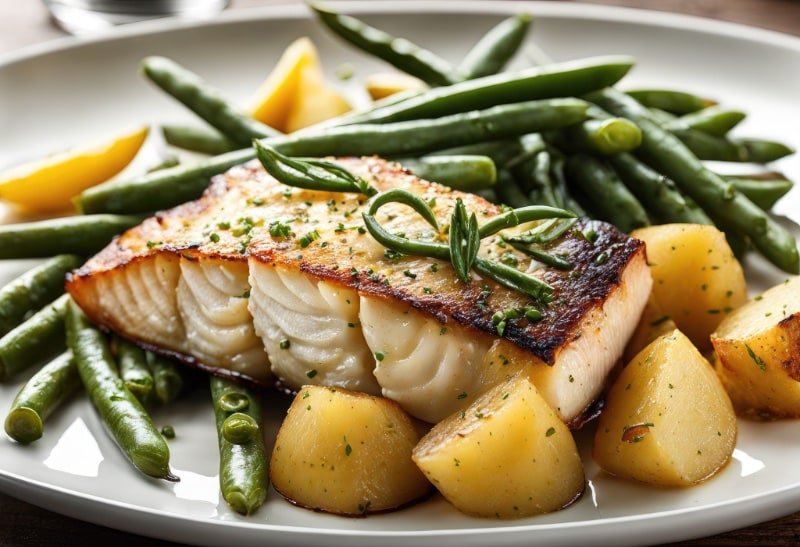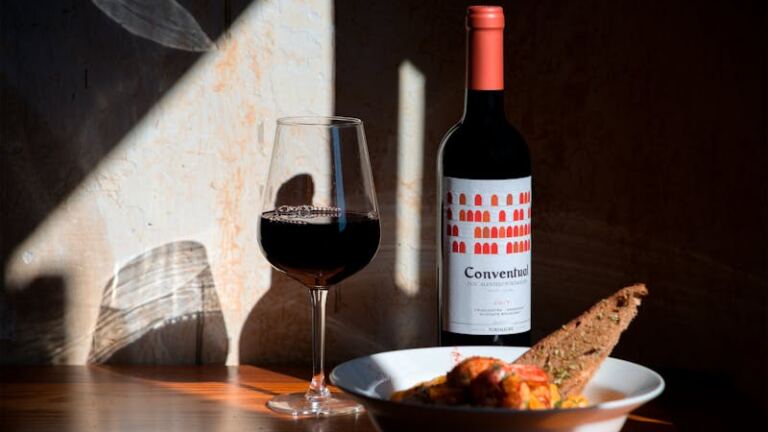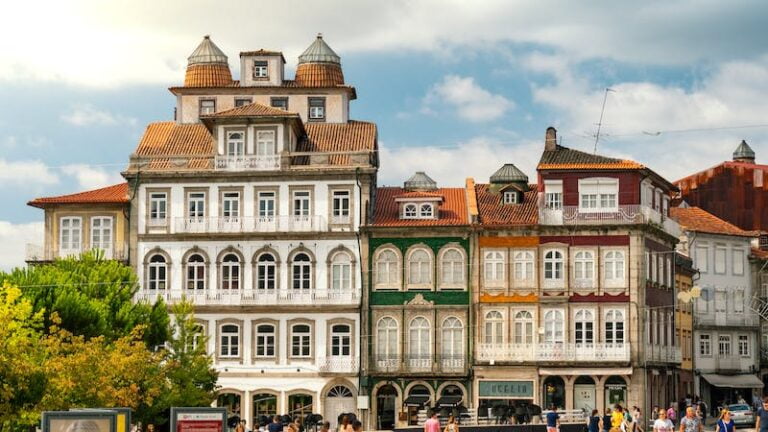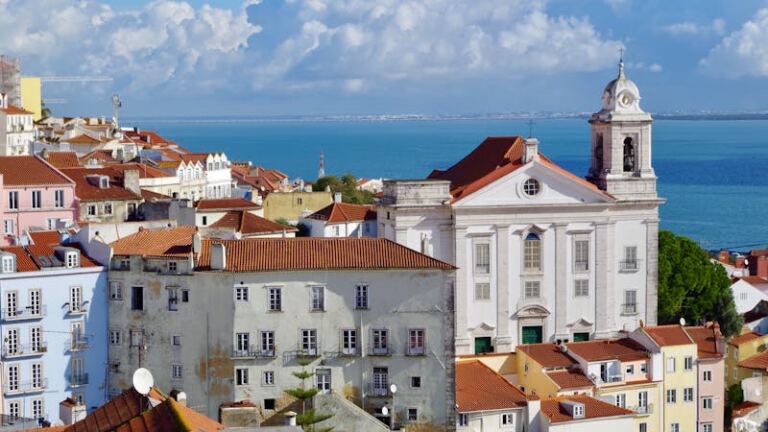The 7 Wonders of Portuguese Culture: From Azulejos to Pastéis de Nata
Portugal is a fashionable country. According to a study by Statista, over 15 million international travelers visited the country in 2022. Its popularity comes down to three main factors: weather, safety, and culture. With sunny days and warm nights, Portugal stands the 6th safest country in the world in 2023.
Besides, with over 800 years of history, it has a rich heritage, including delicious food and stunning architecture. Yet, what are the highlights of Portuguese culture? What would we recognize anywhere as part of its identity and people?
Bellow, you will explore the Seven Wonders of Portuguese Culture. Start with a beautiful Fado tune and appreciate hand-painted azulejos. Then, discover the Manueline architecture. Enjoy the traditional bacalhau
The 7 Wonders of Portugal
Besides these seven characteristic features, Portugal has much more for you to discover. Subscribe to our YouTube channel @portuguesewithcarla for exclusive content! Our videos explore the European Portuguese language, culture, and gastronomy. For example, check out the Top Food&Drink in Portugal, according to the natives.
Fado: Soulful Traditional Songs
Fado (meaning fate or fortune) is a music genre specifically from the Alfama

Traditionally, the Fado belonged to urban class workers who sang about their stories and afflictions. With time, history saw the creation of the Portuguese guitar in three variants: Porto, Lisbon, and Coimbra, to accompany it. And with so many talented artists playing them, there is no way to identify a single one as Portugal’s finest guitarist.
There are two types of Portuguese Fado: the Lisbon one, more popular, and the Coimbra Fado, associated with the local University. Their differences lay in the lyrics and tune but, again, in the instrument used.
Fado has influenced Portuguese contemporary music and life. Amália Rodrigues
Despite the customary gloomy styles, current “fadistas”
Azulejos: Art in Portuguese Architecture
Azulejos are small ceramic glazed tiles, usually square, presenting distinctive designs. They might gather to form a large picture with a specific significance or create a captivating decorative pattern. You can find them in a panoply of colors, but the blue and white tiles are the most common.
The Portuguese word “Azulejo”
Unlike in other countries, Portugal adopted azulejos as more than mere embellishments. The locals incorporated them into the buildings as valuable construction materials.
Now you can find the stunning Portuguese art of “Azulejaria”
Manueline Architecture: A Style of Its Own
Manueline architecture originated from the Gothic style, prominent from the 12th to the 16th centuries. It included imponent spaces full of intricate and symbolic details.
In the late 15th century and the beginning of the 16th century, the Age of Portuguese Discoveries was in its hype. Then, during the reign of King Manuel I
It incorporates religious and political symbols. But it also has elements from nature related to the sea and navigation. You can find buildings in the Manueline style, especially in central Portugal. Mosteiro dos Jerónimos
Cod: A Staple of Portuguese Cuisine
The base of Portuguese gastronomy is the Mediterranean diet. It includes olive oil, garlic, fresh vegetables, fish, and traditional bread. With hundreds of recipes developed over the years and millions of dedicated fans, cod is a widespread national dish.

Yet, cod is a fish that never lived in Portuguese waters. So instead of eating it fresh, the tradition is to buy it salted or cured and soak it before cooking.
During the Roman occupation of the Iberian Peninsula, Portugal established a salted and cured fish trade. Later, in the 15th century, when the Portuguese arrived in Canada, they found an abundance of cod and, again, resorted to salt.
Cod, after being caught, was placed in wooden barrels full of salt and sent off. During the Estado Novo
Pastéis de Nata: The Flavor of Portugal

It’s luscious egg custard wrapped in a flaky, buttery puff pastry. A Pastel de Nata is everything you could ever crave in a sweet treat and more. This unique pastry dates back to the 18th century. Monks created it in the Jerónimos
Later, the recipe was patented and remains secret today. The factory, Pastéis de Belém
Regardless, Pastel de Nata is now one of the most famous desserts in Portugal, earning new fans every day. You can find them at almost every bakery in Portugal, but some are unmissable. There is even a yearly competition to determine who bakes the best ones in the Lisbon region.
Interesting variations have come up, such as a chocolate pastel de nata and a vegan one. In Lisbon and Porto, you can try them at Fábrica da Nata
Port Wine: A Taste of Portugal’s Tradition
Port wine comes from the Douro
As a fortified wine, “aguardente” is added during production. This process stops the fermentation process and preserves the sweetness of the grapes.
Because of the variety of Port wine available, its strength is versatility. Some are perfect as appetizers, and others go with dessert or as digestive beverages. Regardless, there is a Port for each situation and individual.
You can learn more about it by visiting some of the best wineries in the Douro, like “Poças,”
Traditional Festivities and Celebrations: The Vibrant Spirit of Portuguese Society
Portugal has all kinds of celebrations. Fairs are common throughout the country, and national holidays, such as the 25th of April, are solemnly observed. The Catholic Church has had much influence in the country. Hence, most of them praise a regional patron saint.
For example, on the 13th of June, Lisbon celebrates Saint Anthony. On the 24th in Porto, the people organize festivities dedicated to Saint John, and on the 29th, the southern regions honor Saint Peter.

The natives call these celebrations the “Santos Populares“
More on What is Portuguese Culture Known For
Portuguese With Carla has a special program to guide you through the European Portuguese language. The Journey is an interactive path to fluency that presents the unique features of our culture.
Portuguese Football
Portuguese people love their football. It is also home to famous players like Cristiano Ronaldo

Whether in rural regions or urban areas, it’s common to find locals at the local café having a beer and enjoying the game. In 2023, FIFA ranked the Portuguese national team in 9th and 19th places for men and women, respectively.
Arts
You won’t find a great dramatic theatre tradition in Portugal. Instead of dramatic art, musical expression, and dancing have grown a fundamental part of popular culture.
They became accessible to the Portuguese middle class during the 20th century. Afterward, artistic expression grew extremely important for the population. Cultural centers like the Casa das Artes
Dancing
The Portuguese love to dance. They include music and dancing in all their festivities. The “Vira,”
These dances reached the former colonies when Portugal experienced the Age of Discoveries. Some of them are still popular today in places like Goa, India.
Classical and contemporary dancing also conquered its place in Portugal. Several schools and companies opened throughout the country and earned international recognition. The National Ballet Company (CNB), founded in 1977, was the first in the country to present full-length classical ballets.
Music
The mournful tunes of Fado are part of the country’s fundamental forms of musical expression. But Portugal also has a strong presence in other genres. There are several types of traditional folk music, like Cante Alentejano

Polyphonic music, derived from employing multiple vocal parts, became common in the late 15th century. With time, it became profoundly meaningful for Portugal and its people. Additionally, the country is home to notable pianists and other musicians.
A pioneer in academic music’s modern revival in Portugal was Luís de Freitas Branco
Lisbon’s Metropolitan Orchestra, founded in 1992, is famous for its major concerts. And more recently, another composer, João Pedro Oliveira
Literature
Portuguese culture includes original literature, meaningful poetry, heartfelt romances, and non-fiction works. In the 16th century, the Renaissance fostered changes in writing styles, creating an elevated tone.
From that time, the work “Os Lusíadas“
Fernando Pessoa
When in Portugal: The 7 Wonders of The Iberian Country
As one of the oldest countries in Europe and the world, Portugal amazes with its rich cultural heritage. In this article, you’ve explored a part of what the country has to offer.
You’ve discovered the history and significance of the Fado and how cod made its way to Portuguese tables. Then, you learned the value of art for the natives over the years with Manueline architecture, dancing, and literature.
These cultural aspects are part of a country’s identity, and learning about them makes your visit all the more enjoyable. What was your favorite of the seven wonders of Portuguese culture? Which are you more excited to see on your next trip? Let us know below!
More of Portugal: Culture, History, and Tradition
Our European Portuguese course, The Journey, is a comprehensive resource for you to learn about Portugal. It includes fascinating curiosities about the country and its people.
This interactive program will help you learn our beautiful language while having fun. Join us and discover the true splendor of Portugal!
Learn European Portuguese the Instinctive Way!
For the last decade, we’ve been working on putting together the best possible European Portuguese course. After much research, feedback from our students, and several iterations, we think we’ve got it! 😉
At the base of it all is a sound conviction that languages are better learned instinctively, so the process needs to engaging, varied, and enjoyable. Throughout, we used scientifically proven techniques to help you master pronunciation, phrase construction, oral understanding, grammar, and all the necessary bits to get you to fluency. And still, the whole thing is presented as an adventure. It’s a course like no other, trust us!









